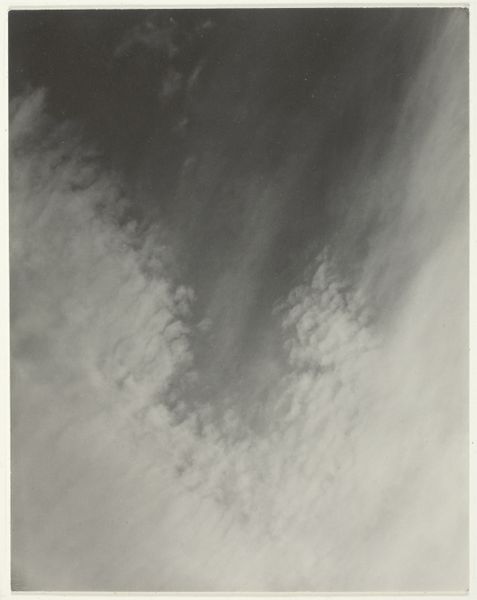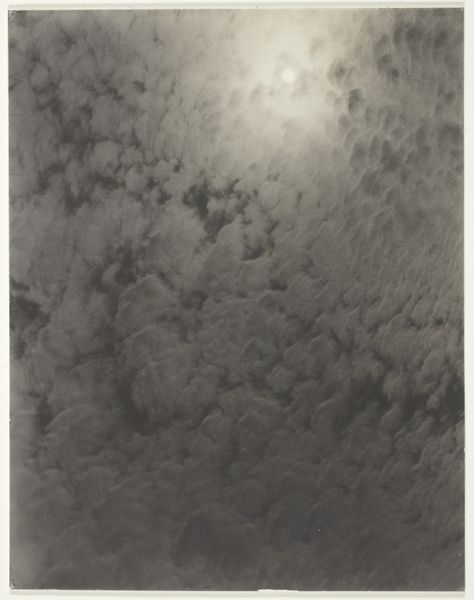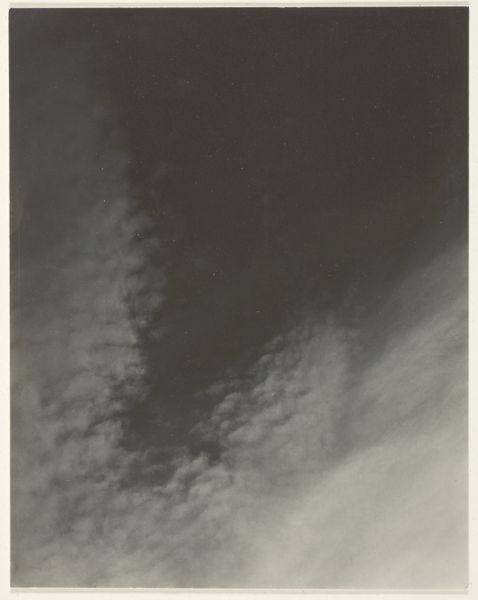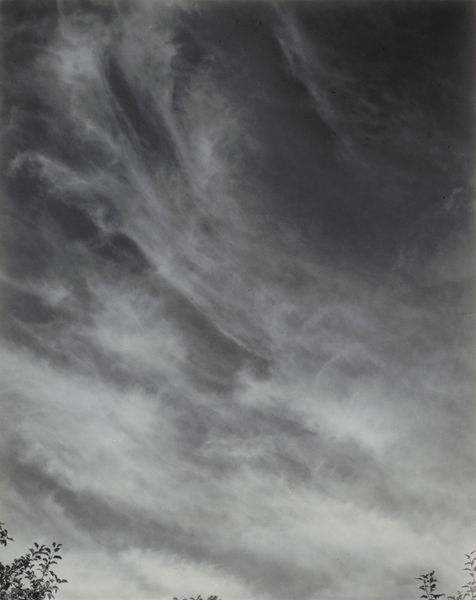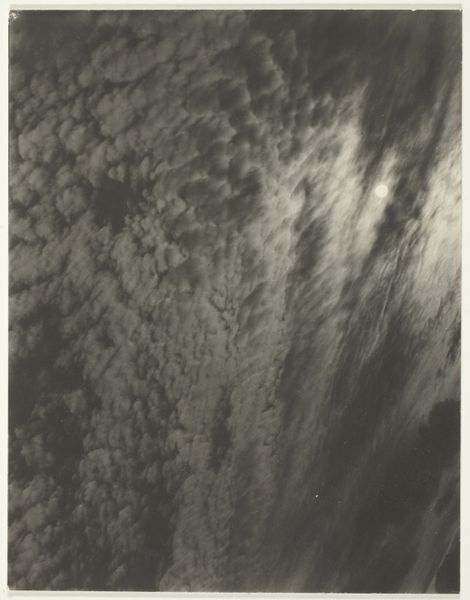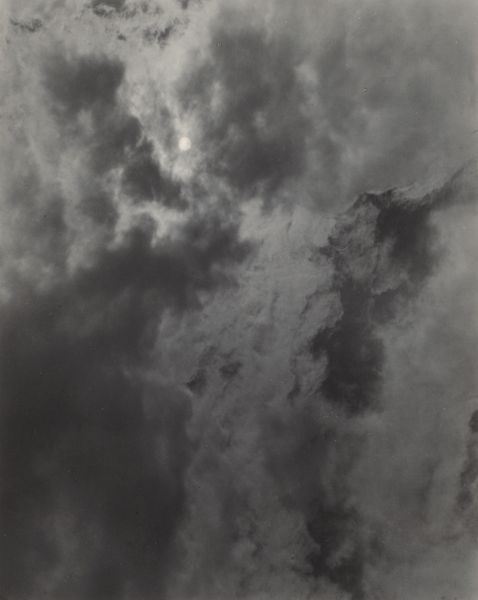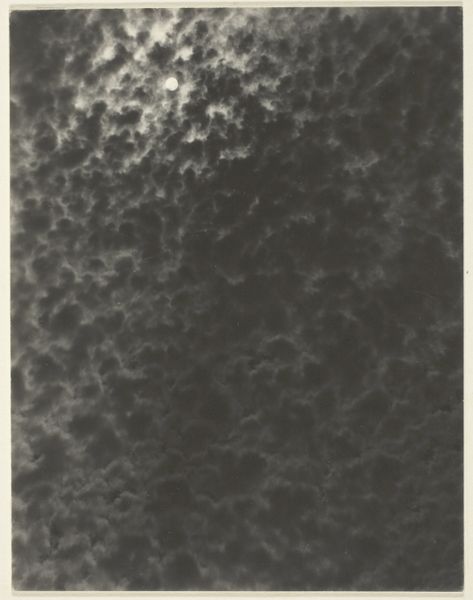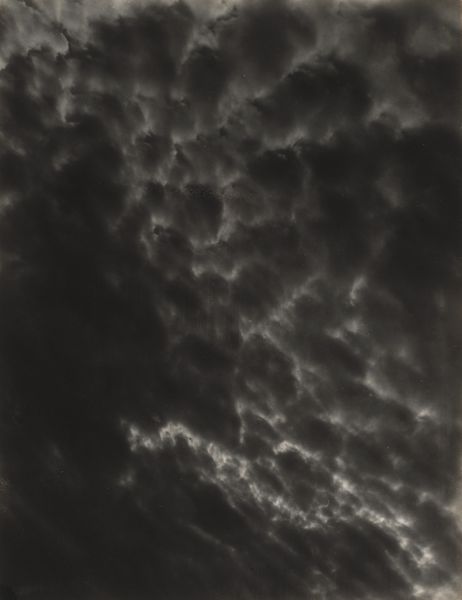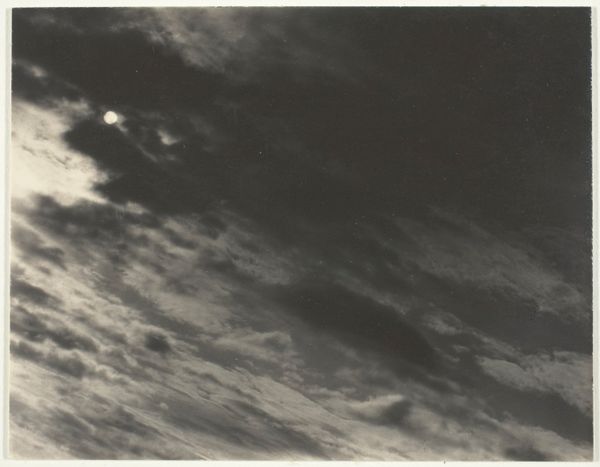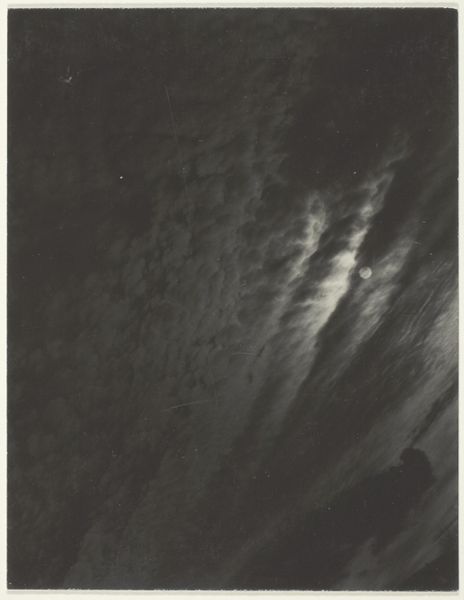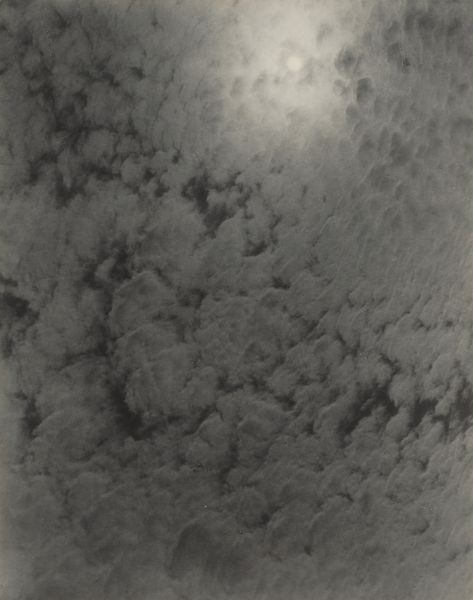
Dimensions: 11.5 × 8.9 cm (image/paper/first mount); 34.3 × 27.7 cm (second mount)
Copyright: Public Domain
Editor: This is "Equivalent" by Alfred Stieglitz, made in 1923. It's a silver print on paper. I find it very calming; the gradations of grey are mesmerizing, and it feels quite abstract, even though I know they are photographs of clouds. What do you see in this piece? Curator: The formal qualities are indeed captivating. Observe the tonality – the exquisite range of greys achieved through the silver print process. It’s crucial to consider how Stieglitz employs light and shadow to sculpt the form. Editor: Right, I see that! How the light defines the clouds, giving them shape... it’s almost sculptural. Curator: Precisely! Notice, also, the composition; how the artist utilizes the picture plane to divide light and shadow. There is almost an attempt to depart from capturing something “real.” It asks us: what else do the forms remind us of? Do they suggest landscapes, figures? What’s important, though, is that such connections remain indeterminate. Editor: It's interesting that you mention what else the forms might suggest! It makes me think about Rorschach tests. Curator: Perhaps. It presents an engagement between representation and abstraction that is fundamental. By what compositional elements and choices of the artist does the work communicate its effect to the viewer? Editor: I hadn't considered it that way. It's about what the *art* is doing to *me*, not what I’m necessarily supposed to see within the image. It has an emotional effect and that comes from its composition. Curator: Yes, indeed! It encourages an active rather than passive engagement with the art object. I hope it allows you to consider the expressive potentials and communicative strategies within the art!
Comments
No comments
Be the first to comment and join the conversation on the ultimate creative platform.
